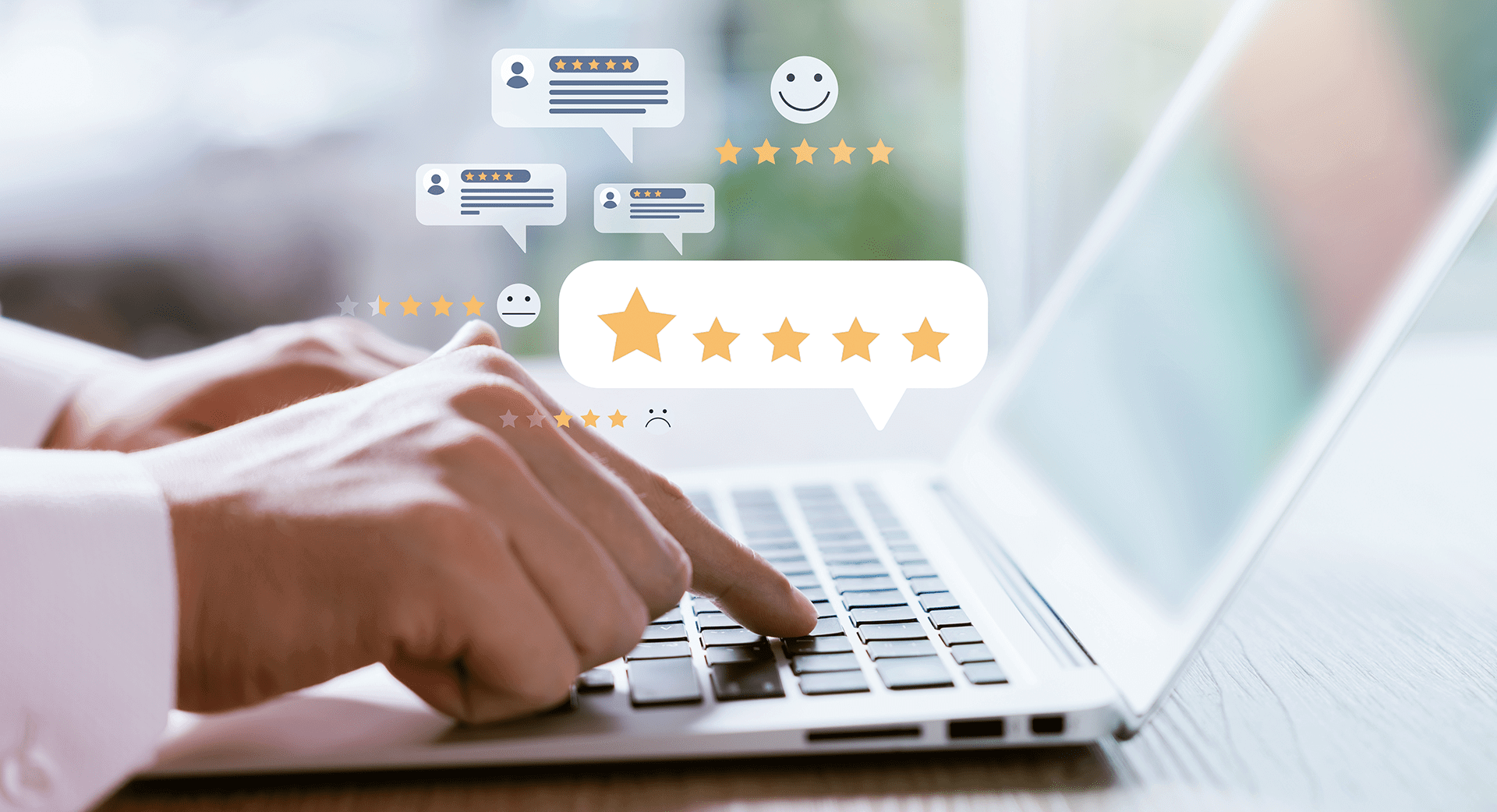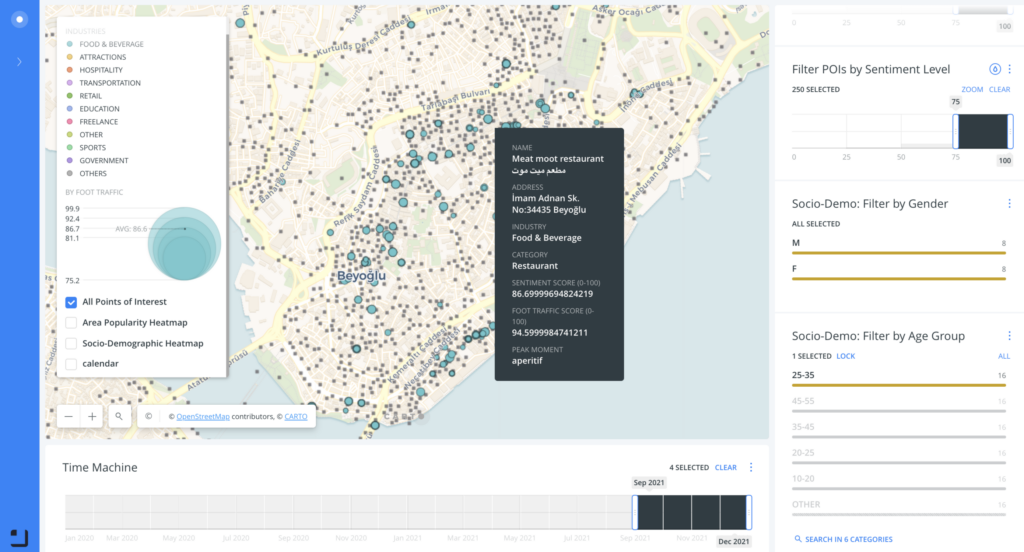Opening a new retail business is an extremely rewarding yet challenging endeavour.
It involves plenty of preparation, dedication, and commitment for your business to take off and thrive in both the short and long term.
Keeping up with everything you need to check off your to-do list can be pretty overwhelming, especially for those opening a new business for the first time.
That’s why we’ve created this comprehensive guide to provide invaluable tips and advice to help you navigate the process successfully.
In this blog, we’ll share nine practical tips that cover various aspects of opening a retail business — including attracting new customers, choosing the right location, crafting an effective marketing strategy, and much more.
We’ll also take a look at how data, especially location intelligence, can help make these aspects less intimidating.
#1: Draw up a comprehensive business plan
First things first. A complete business plan is like a skeleton of every successful business. It serves as a roadmap, goals, strategies, and tactics, helping you stay focused and organised throughout the entire process.
And although it might seem like a long and arduous process, all the effort you put into this phase of your business lifecycle will pay off in the long term.
One of the top benefits of a business plan is that it, first and foremost, helps you critically evaluate your business concept.
Carrying out thorough market research and analysing your target audience and your competition will help you understand if your business idea can ultimately work.
You can do this by answering questions like:
- What service or product will my business sell?
- Who is my target audience?
- Where can I find this target audience?
- Are there any competitors doing this same business?
- Where are they located?
- What are the potential pitfalls of my business idea?
- What can give me a competitive advantage over my competitors?
- What is my marketing and sales strategy?
- What’s my budget?
- How will I measure my success?
- The more thorough your analysis, the better equipped you will be to jump on any opportunity or mitigate any risks or challenges in the future.
Naturally, you don’t need all the answers to all the questions at this stage, and you’ll need to adapt and adjust going forward.

How to choose the right location
Choosing the right location isn’t easy — but using data lets you efficiently filter potential areas to pinpoint the ideal one for your business.
By analysing relevant location data, such as sentiment and popularity data, you can make informed decisions that align with your target audience, business idea, and your business’s success.
You’ll gain invaluable insight into the demographics and characteristics of an area, helping you get an idea of your potential customer base. As we’ve seen in the example above, this can make or break your business’s success, so investing in this phase is incredibly crucial, as you’ll reap the benefits throughout your entire business lifecycle.
Through location data (also called location intelligence) for site selection, you can:
- Analyse the places with the highest investment potential for effective site selection
- Understand the distributor/supplier landscape in the area
- Qualify leads by looking at the POI address and contact information
- Evaluate current product or service coverage compared to your competitors
- Take a deeper look at the most appreciated aspects of a business or a territory
- Understanding what can be improved or any gaps in the market, you can fill or address
- …and more.

How can you access information for competitor and market analysis efficiently?
As you can imagine, a wealth of information is required for a comprehensive analysis of your market and competitors. The question is: how can you efficiently and accurately obtain the data needed to make informed decisions?
The answer is, once again, location intelligence.
Through data such as sentiment and footfall, you’ll start filling in the blanks for the following pieces of information:
- Demographic analysis: Location intelligence provides demographic data through which you can understand a specific area’s characteristics. By mapping and analysing this demographic data, you can gain insights into both your target market and that of your competitors to identify potential opportunities or gaps.
- Competitor mapping: Through location intelligence, you can map the locations of your competitors’ stores, offices, or distribution centres. By visualising their spatial distribution, you can identify patterns and concentrations of competitors in certain areas. This information can help you understand their market presence, potential customer base, and strategic decisions related to their locations.
- Trade area analysis: Location intelligence helps define and analyse trade areas by examining where your competitors are, so you can evaluate the level of competition within specific regions and identify potential areas for expansion or market penetration.
- Footfall analysis: With insights into footfall or customer traffic patterns, you can determine high-traffic areas, famous shopping districts, or places with high customer density. This information can help you understand the best locations to open new stores and adjust your marketing strategies while assessing the potential and performance of your competitors’ sites.
- Site selection: By analysing factors such as competitors in a potential area, customer demographics, traffic patterns, and local amenities, location intelligence helps you identify the optimal spots that are likely to offer your business a competitive advantage and potential market growth.
- Geospatial analysis: Using appropriate tools and technologies, you can overlay multiple datasets on maps, enabling geospatial analysis. By integrating different data sources like customer, competitor, and market data, you can spot any potential links, patterns, and trends that might be otherwise difficult to uncover. This way, you can gain deeper insights into market dynamics and help you make strategic decisions.
- Market visualisation: Data visual representations through maps, heat maps, and charts make understanding and communicating market analysis findings easier. By visually representing data, you can identify spatial relationships and trends and present your analysis in an understandable and user-friendly manner.
#5: Create your marketing strategy
Marketing is half the battle when launching a new product or service. After all, being the best in your industry doesn’t count for much if you can’t communicate it well to your audience — making a well-crafted marketing strategy a must to lay the foundation for success.
So what does an effective marketing strategy look like?
First, you’ll need to outline your objectives, target audience, and positioning. This will help you define your unique value proposition and understand how to differentiate yourself from your competitors, develop a compelling brand identity, and tailor your offering and marketing message to resonate with your intended audience.
You’ll also need to understand how you’ll evaluate and measure the effectiveness of your strategy. By setting specific goals and KPIs, you’ll know what’s working and what isn’t and eventually understand what you need to do to optimise your strategy to drive further growth.
A well-constructed marketing strategy offers numerous benefits, including helping you wisely allocate your resources by planning your promotional plans.
You can, for instance, choose the most effective marketing channels and methods to reach your target audiences, such as through digital channels, out-of-home advertising, traditional ads, or a mix of all. By understanding where your audience is and how to reach them, you can optimise both your budgets and your efforts — and maximise your return on investment.
How can location intelligence help you identify the best vendors and suppliers?
When entering a new market, location intelligence is a valuable tool for retailers. With location data, you can quickly identify the most suitable vendors and suppliers by gaining insights into their proximity to your business. For instance, you can find geographically conveniently located vendors to reduce transportation costs and optimise delivery times.
On the other hand, sentiment scores can give you an insight into the level of customer satisfaction and brand reputation of a chosen vendor or supplier.
By analysing sentiment data from customer reviews, social media mentions, and other sources, you’ll understand how fellow retailers and customers feel about vendors and the services they offer.
By using sentiment scores, you can make better decisions when choosing vendors. Look for vendors with positive sentiment scores to ensure customer satisfaction and maintain a positive brand image.









